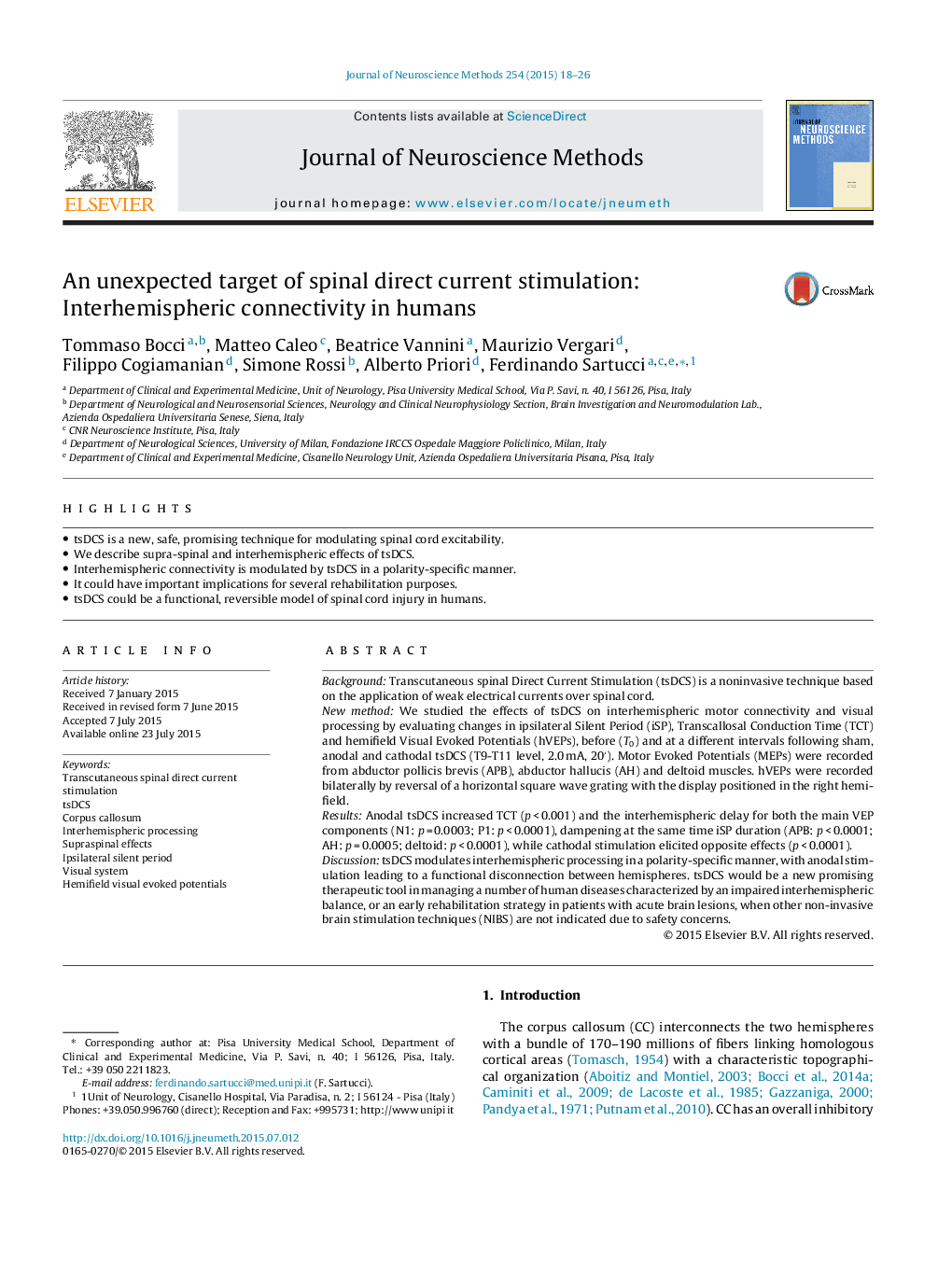| Article ID | Journal | Published Year | Pages | File Type |
|---|---|---|---|---|
| 6267922 | Journal of Neuroscience Methods | 2015 | 9 Pages |
â¢tsDCS is a new, safe, promising technique for modulating spinal cord excitability.â¢We describe supra-spinal and interhemispheric effects of tsDCS.â¢Interhemispheric connectivity is modulated by tsDCS in a polarity-specific manner.â¢It could have important implications for several rehabilitation purposes.â¢tsDCS could be a functional, reversible model of spinal cord injury in humans.
BackgroundTranscutaneous spinal Direct Current Stimulation (tsDCS) is a noninvasive technique based on the application of weak electrical currents over spinal cord.New methodWe studied the effects of tsDCS on interhemispheric motor connectivity and visual processing by evaluating changes in ipsilateral Silent Period (iSP), Transcallosal Conduction Time (TCT) and hemifield Visual Evoked Potentials (hVEPs), before (T0) and at a different intervals following sham, anodal and cathodal tsDCS (T9-T11 level, 2.0 mA, 20â²). Motor Evoked Potentials (MEPs) were recorded from abductor pollicis brevis (APB), abductor hallucis (AH) and deltoid muscles. hVEPs were recorded bilaterally by reversal of a horizontal square wave grating with the display positioned in the right hemifield.ResultsAnodal tsDCS increased TCT (p < 0.001) and the interhemispheric delay for both the main VEP components (N1: p = 0.0003; P1: p < 0.0001), dampening at the same time iSP duration (APB: p < 0.0001; AH: p = 0.0005; deltoid: p < 0.0001), while cathodal stimulation elicited opposite effects (p < 0.0001).DiscussiontsDCS modulates interhemispheric processing in a polarity-specific manner, with anodal stimulation leading to a functional disconnection between hemispheres. tsDCS would be a new promising therapeutic tool in managing a number of human diseases characterized by an impaired interhemispheric balance, or an early rehabilitation strategy in patients with acute brain lesions, when other non-invasive brain stimulation techniques (NIBS) are not indicated due to safety concerns.
